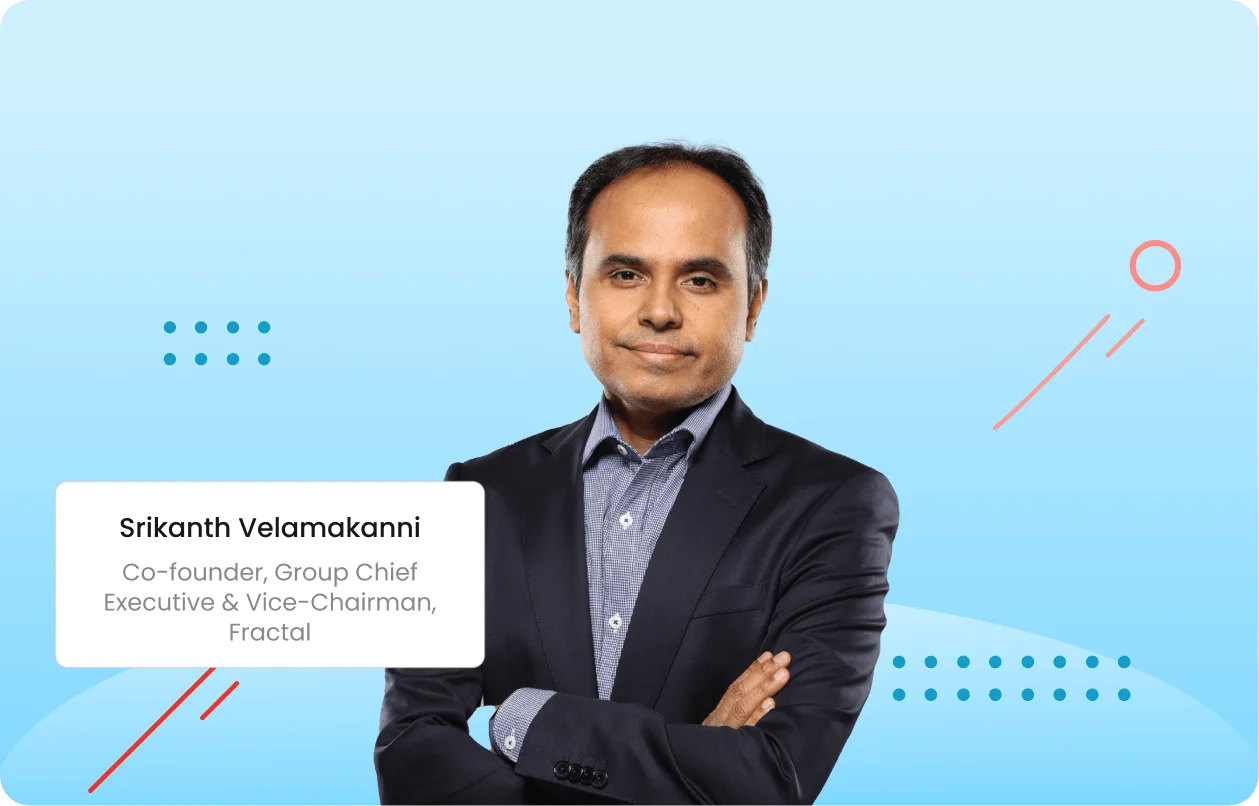In today’s globalized business landscape, developing organizational cultures that foster flexibility and innovation is paramount to success. In our exclusive interview with Erin Meyer, she shares her insights on how companies can cultivate organizational cultures that promote flexibility and innovation. Drawing from her vast experience and research, she highlights the key factors contributing to successful cross-cultural collaboration. She identifies strategies for overcoming the invisible boundaries hindering global business.
The Culture Map framework is the culmination of Meyer’s extensive research, which involved conducting thousands of interviews with senior leaders in over 62 countries. By analyzing these interviews and synthesizing the data, Meyer has provided leaders with a powerful tool to navigate cultural differences and compare management styles across various cultures.
Your book The Culture Map is about breaking through the invisible boundaries of global business. Can you tell us what these boundaries might look like and their challenges?
Let’s begin with how our cultural background may shape the way we give feedback. I’ve lived in France for 21 years after growing up in Minnesota. One thing that always strikes me is just how differently we approach feedback in these two places.
In the US, we are taught that if you need to provide criticism, the most motivational approach is to begin by providing a few genuine positive things you feel that person is doing well. This shows respect. Then you can tell the person what you feel they’ve done poorly. This style of wrapping positives around negatives is both constructive and motivational. In France, it’s a different story.
Here, positive feedback is given less frequently than in the US, and negative feedback more strongly. A frequent example would be that an American boss sits down with his French employee for a performance review. He starts outlining everything this employee is doing well and expressing appreciation for these elements. She’s thinking, “Wow, this is the best review I’ve ever received!”
That’s where the invisible boundaries come in. The boss moves on to his real feedback – the areas where improvement is needed. But the French employee is still basking in the glory of the positive messages. By the time he gets to the real message, she isn’t listening any longer. The French employee walks away, thinking she’s a superstar. The American boss believes he’s made it clear that she needs to change her performance.
This invisible boundary can wreak havoc in the workplace if not understood or managed. It’s crucial for all of us – whether we’re the feedback givers or receivers – to recognize these cultural gaps and find ways to bridge them.
The key is being aware of these differences and adapting our communication styles accordingly. The culture mapping process helps to pinpoint feedback preferences in a wide variety of cultures worldwide so that you can be more strategic and empathic and ultimately get your message across as desired. Regarding feedback, the message is not “do unto others as you would have done to you” but “do unto others as they would have done to themselves.”
Why must companies ensure their employees are prepared to work effectively with colleagues and clients from different cultures?
When working in global environments, it’s easy to assume that we’re just independent individuals unaffected by a specific cultural lens. We tend to believe that our actions and behaviors solely reflect our personalities. The truth is more complicated.
Of course, every individual in every culture is unique. But in addition, whether we are aware of it or not. Culture plays a profound role in shaping our behaviors and perspectives.
Suppose someone from a different culture acts in an entirely appropriate way in their cultural context but inappropriate in mine. In that case, it’s natural to jump to conclusions and think, “This person is arrogant,” or “He doesn’t like me.” It’s easy to mistake a cultural difference for an individual characteristic when we are not intimately familiar with the other person’s culture.
Suppose I take the time to understand the differences in how different cultures communicate, build trust, and get things done. In that case, I can effectively tease what’s cultural and personal when working internationally. I can foster a mindset of curiosity and empathy, seeking to understand the multiple factors at play. This awareness allows me to approach cross-cultural interactions with greater effectiveness.
Can you talk about a time when you encountered a cultural difference you didn’t understand and explain how you resolved the situation?
I have an example from several years ago, just after the release of my book. While on a book tour, I visited Tokyo and delivered a 50-minute presentation to 40 Japanese managers. In the end, I asked if there were any questions. No one raised their hand, so I went to sit down.
My Japanese colleague, who supported me, sensed my disappointment and discreetly pulled me aside. She whispered, “I think there actually were some questions. Would you like me to try?” She then addressed the audience, saying, “Professor Meyer has just shared her insights with you. Do any of you have questions?” Once again, no one raised their hand. But this time, my colleague stood still and silently scanned the room for several long seconds. Then, she gestured to an audience member, who appeared motionless to me, and asked, “Do you have a question?” To my surprise, the person sat up straight, saying, “Thank you, I do,” and then posed a thought-provoking inquiry. My colleague did this two more times.
That evening, I asked my colleague how she knew those individuals had questions. She thought about it and responded, “It had to do with how bright their eyes were.” I must have looked confused because she clarified, “In Japan, direct eye contact is less prevalent than in Western cultures. Therefore, when you ask questions, you’ll often find people looking around the room rather than directly at the speaker. She explained, “When you asked the group if there were any questions, I noticed that a couple of people were looking right at you, and they held your gaze. That signified that they would be happy to have you call on them if you would like to.
The next day, after a similar presentation, I again asked for questions and comments, and no one raised a hand. But this time, I followed what my colleague had modeled for me. I looked carefully at all the faces and saw that only a couple of people were looking directly at me. When I looked back at one of them, she held my gaze. Now, whether her eyes were bright or not, I don’t know, but I wanted to try. I gestured slightly towards one woman who was clearly looking right at me, to which she responded by giving a slight nod.
“Would you like to share a comment or ask a question?” I asked. She said, “Yes, thank you,” and asked an insightful question. In Japan, there is a popular expression: “kuuki yomenai.” It means someone unable to read the air or someone who can’t pick up the subtle, unspoken messages in the interaction. I began to feel just how kuuki yomenai I was on this trip. I also saw again how much I could learn from my international colleagues.
After the trip, I returned to INSEAD, where I teach these incredibly multicultural classrooms. My students are managers from all over the world. As I scanned my classes for questions, I felt unsettled to see that I had been missing a lot of bright eyes in my classroom, not just from the Japanese. My American assumption that if someone had something to say, they would raise their hand was unintentionally blocking much of the student interaction.
On that trip to Tokyo, I was incredibly lucky to have a colleague from the country I was collaborating with whom I could ask questions. This is what we need to do constantly in our international collaborations. Find someone from the culture you are working with whom you can ask questions. With enough curiosity and humility, we can all get better and read one another’s air.
Can you give us an example of one of your culture mapping tools and explain why it is so effective?
Early in my career, I worked with a diverse team comprising individuals from the UK, France, and India. It was fascinating to observe the contrasting perceptions and complaints that arose within this group. The British team members felt the French lacked organization and were consistently tardy. At the same time, the employees from India expressed frustration with what they perceived as rigidity and excessive focus on structure and punctuality displayed by the French colleagues.
In reflecting on these dynamics, I turned to my time orientation scale, which sheds light on how different cultures value and prioritize time-related aspects. What I discovered was that British culture highly values structure and punctuality. In contrast, Indian culture places greater emphasis on flexibility and adaptability. Interestingly, the French position themselves somewhere in between these two extremes. This relativity influences how individuals from Britain and India perceive their French colleagues.
This realization led me to a critical insight: understanding cultural differences is not about describing what each culture is like. Instead, it involves considering how different cultures are positioned about one another and recognizing the relative gaps between them. Through this lens, we can understand the dynamics and effectively navigate the challenges in multicultural environments.
By acknowledging the relative positioning of cultures, we can move away from generalizations and stereotypes and instead focus on fostering empathy and bridging the gaps between diverse perspectives. It’s about cultivating a mindset that appreciates each culture’s unique strengths and values while also recognizing the potential areas of friction or misalignment that may arise due to these differences.
Understanding cultural differences is an ongoing journey of exploration and learning. It requires us to embrace the complexity and fluidity of cultural dynamics and approach them with an open and curious mindset. Doing so can foster collaboration, build stronger relationships, and create a harmonious environment where diverse cultures can thrive together.
Your book provides a framework for understanding cultural differences. How can individuals or organizations effectively apply this framework to cultivate a workplace culture that is both inclusive and characterized by mutual respect?
Throughout the past decades, cultural differences have often been overlooked and left unspoken within the corporate world. There is a prevailing belief that discussing culture implies a disregard for individuals’ unique personalities. However, this approach needs to be revised in several ways. Let’s examine one simple aspect: the dynamics of speaking up in meetings.
In countries like the US, the Netherlands, Brazil, Italy, and India, it’s common for people to engage in lively discussions and express their opinions freely in meetings. In these cultures, if you attend a meeting and don’t speak up, you will be seen as disengaged or having little to contribute. People from these cultures tend to become uncomfortable with silence quickly and would prefer to say anything at all than to sit without someone speaking.
However, a different norm prevails in many East Asian cultures, such as China, Thailand, and Korea. In these cultures, people often only speak up in meetings if they have something thought through and significant to contribute. Often the person to speak the most or to speak first may be perceived as showing off, selfish, or a poor listener. People are more likely to carefully prepare before speaking and weigh whether their comments might be perceived as wasting others’ time before sharing their viewpoints.
These cultural differences may seem innocuous, but they can significantly affect our quest for diversity and inclusion. Simply bringing people from various walks of life together around a table is not enough. We must go beyond mere representation and facilitate an understanding of how to navigate and manage cultural disparities.
When you moderate meetings with people worldwide, invite quiet people to share their perspectives. Let participants know in advance what topics you will be asking for input on and advise quieter participants that you will call on them individually so everyone is comfortable and prepared when you do. If some participants don’t respond immediately, allow a few more seconds of silence before speaking yourself. When you ask questions, go around the table to hear each team member’s input.
As for more talkative cultures, like the US, prepare participants to speak a little less to give international colleagues more space. When holding meetings over virtual media, ask people to raise their electronic hand and call on them in order or ask all participants to chat an answer to a question into the chat box and then ask those with the most interesting written answers to speak up.
Only then can we ensure that all voices, regardless of their cultural backgrounds, are genuinely heard and valued. This approach enables us to tap into diverse perspectives, unlocking innovation, creativity, and problem-solving capabilities that may otherwise go unrecognized.
What are the benefits for companies that successfully break down global business barriers?
I often encounter whether it is more effective for leaders to be authentic or flexible when working globally. The truth is that successful global leaders embody both qualities. They deeply understand their leadership style and what makes them effective. They can discern the aspects of their leadership that are influenced by their cultural background. They also possess the humility and curiosity to learn and continuously adapt their approach to different cultures.
By embracing authenticity and flexibility, these leaders have a choice. It does not mean they must conform to a specific cultural way of leading in each country they operate in. Instead, they recognize the underlying business dynamics within a particular cultural context, enabling them to make informed decisions about adapting their leadership style accordingly when they deem it useful. This ability to navigate cultural nuances is crucial for success.
Companies led by individuals who are authentic but lack flexibility often face challenges. Their employees and teams may feel demotivated and struggle to understand how to collaborate effectively. Moreover, engaging clients and working harmoniously with suppliers becomes a significant hurdle. The multicultural setting in which organizations operate is of utmost importance, and leaders must be attuned to this reality.
Authentic and flexible leaders possess a valuable combination of self-awareness and adaptability. They understand the strengths of their leadership style while remaining open to learning from different cultural perspectives. This allows them to build bridges, foster collaboration, and create a work environment where diverse teams can thrive. Ultimately, embracing authenticity and flexibility enables leaders to navigate the complexities of global business with cultural intelligence and achieve remarkable outcomes.
Can you share a real-life story from one of the businesses you have worked with to address cultural differences?
Let me share an illustrative example related to the Trusting scale on my Culture Map framework. This dimension explores how trust is built, encompassing two types: cognitive trust and affective trust. Cognitive trust is trust from my head: you are reliable, on time, and good at your job; therefore, I trust you. Affective trust is trust from your heart: I have an emotional bond with you, I’ve spent time getting to know you, I’ve seen who you are below your professional persona, and I trust you.
Recently, I had the opportunity to work with a company based in Australia that was navigating negotiations with a Chinese counterpart amidst the challenges of the COVID-19 pandemic. The Australian contact expressed frustration, perceiving the Chinese team as difficult to work with, confrontational, and experiencing a lack of progress. However, after reading my book and delving into relationship orientation, she realized that the issue might be insufficient attention to building relationships.
Given the travel restrictions, she devised a creative approach to bridge the cultural divide. She visited Chinatown in Sydney and purchased cartons full of Chinese snacks. Then she sent a package containing these snacks alongside typical Australian snacks to their counterparts in Shanghai. During the next meeting, they set aside ten minutes to open the boxes and share their snacks. In this simple act, something remarkable happened. The Chinese team members enthusiastically explained when and how each Chinese snack is eaten, and the Australians reciprocated equally. Suddenly, everything changed. A sense of friendship and camaraderie emerged, leading to the establishment of affective trust.
This example highlights the power of investing effort in building relationships across borders. The Australian contact fostered a connection that transcended cultural differences by demonstrating genuine interest and making thoughtful gestures. This shift in relationship orientation had a transformative impact on the dynamics of the negotiation process.
It serves as a compelling reminder that when we take the time to understand and appreciate the cultural values and norms of others and when we actively engage in relationship-building efforts, we can cultivate a sense of trust and camaraderie that fuels collaboration and success. These small gestures of cultural intelligence can bridge gaps and transform interactions, enabling effective communication and cooperation even in complex cross-cultural settings.

The Culture Map: Breaking Through the Invisible Boundaries of Global Business
Gain valuable insights, practical frameworks, and strategies for navigating cultural differences, building effective relationships, and becoming a successful global leader. Enhance your cultural intelligence and thrive in diverse environments.
Get your copy










